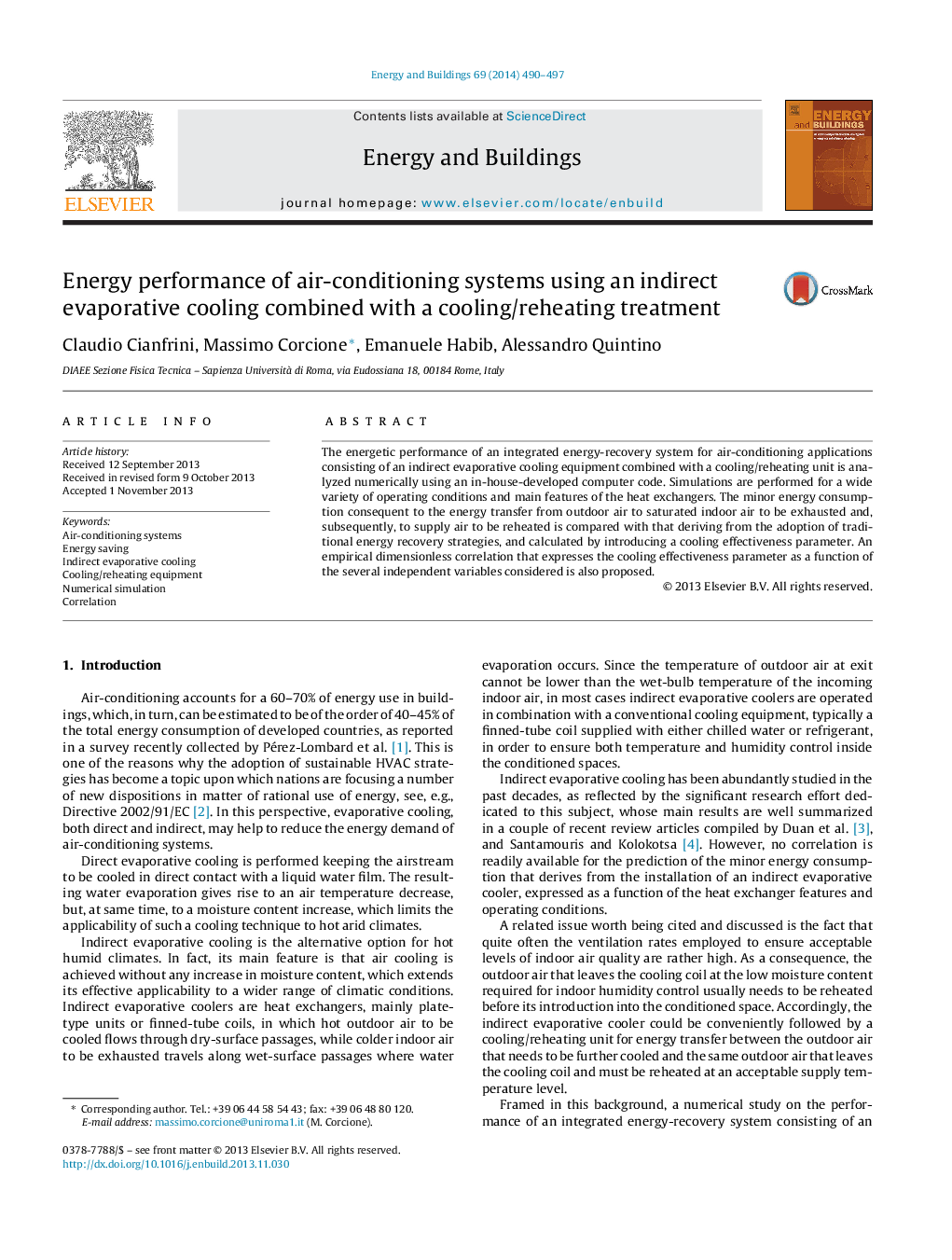| Article ID | Journal | Published Year | Pages | File Type |
|---|---|---|---|---|
| 263171 | Energy and Buildings | 2014 | 8 Pages |
•Use of indirect evaporative coolers reduces the energy demand of HVAC systems.•Energy can be further saved by an integration with cooling/reheating units.•Significant minor energy demands with respect to traditional setups are obtained.
The energetic performance of an integrated energy-recovery system for air-conditioning applications consisting of an indirect evaporative cooling equipment combined with a cooling/reheating unit is analyzed numerically using an in-house-developed computer code. Simulations are performed for a wide variety of operating conditions and main features of the heat exchangers. The minor energy consumption consequent to the energy transfer from outdoor air to saturated indoor air to be exhausted and, subsequently, to supply air to be reheated is compared with that deriving from the adoption of traditional energy recovery strategies, and calculated by introducing a cooling effectiveness parameter. An empirical dimensionless correlation that expresses the cooling effectiveness parameter as a function of the several independent variables considered is also proposed.
